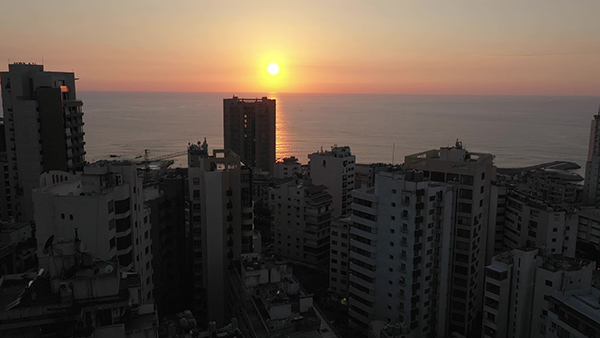These are some of the issues that the videos presented in this festival will convey.
- Questions about life and questions about creation:
- How does the examination of the every-day lead to the extra-ordinary?
- How does a group of still people transmit such a sense of urgency to produce the desire for reaction and creation?
- How do melting materials and their melting sound lead to such a dark place in humanity?
The Limited Access Festival 8 will provide the space and the time where moving images will poetically present these issues and bravely propose these questions. Your eyes will follow, as will your ears, and you will find that your senses, together with these artists, will create meaning beyond words and above an ordinary understanding of reality.
The question of trauma in visual representation has always troubled me. How to articulate traumatic events without engaging in a dynamic that further demonizes the victims? This experimental documentary explores aspects of NAFTA – North American Free Trade Agreement- that contributed to the mass migration of Mexican workers to the United States in the 1990s.
Embedded in neoliberal ideology promoting the idea of a “free market”, NAFTA exposed the contradictions between ideology and policy within the framework of neoliberalism.
The story of Santiago, Luiza and their family is intertwined with language (alien is the official term for foreigners in the USA) and the fantastic appearance of the uncanny.
Shot in the Sonoran desert in Arizona, Dreaming a Dream of the Global North explores a wider historical moment, tracing signifiers of cultural domination and some of the vestiges of colonialism and its mutation. This film is partially inspired by Caetano Veloso’s song Um Indio.
The core of this artistic and academic research is based on three different models of black gold, which are emblematic of western development: oil, coal, and gold (metal), and its correspondent economic infrastructures of extraction, thanks to which flows of production of value and capital circulate globally dissolving any geographical border.
Water is never still. And what else to say about water, after having seen the immense walls of dark stones of the palaces and old houses of Beirut, except that water continues to love and to destroy the fortress of spirit that characterizes Lebanon. Water reduces this spirit of conquest and of negation of old Lebanon to walls of canvas whose gashes are death for matter and a window for the liberation of the mind. Should water, therefore, should be thought only in relation to its sites, and within the civilizations to which it belongs?
This short video from 2016 depicts the skinning, uprooting, transportation and replanting of a palm in Borrego Valley, California, USA. Workers on the palm grove uproot the palm and transport it, to a newly constructed residential area. Here it is replanted as decorative purposes, by the entrance to housing sites that are soon be on sale.
This straightforward narrative is broken apart by unexplained sounds and images. Glimpses of the groves general palm production appear, like detached memories of the palm that is being transported through the valley. Images of the owner of the grove removing weeds, seeds from the palms are found and tasted, water gushing from a fountain. Meanwhile dreamy sounds of small rocks falling down the shaft of palm grove’s well are heard. The echoing ricocheting of the rock, the voice of the own asking us, “if we are ready?”, followed by the sound of water, as the rock hits the aquifer beneath the palm grove.
The project “The Boat Has Sailed, Hasn’t it?” includes three parts – a fish’s funeral speech, a seesaw boat, and a floating dock in the Wesserunsett Lake, Maine. The voiceover in the video presents what I call “boat conversations,” produced on a wooden seesaw boat that I built during the Skowhegan residency. The video is a way to discovering the relationship between the floating dock and a wooden boat leading an uncertain ways of searching. In 1975, artist Bas Jan Ader attempted to sail across the Atlantic in order to make the work “In Search of the Miraculous ”. Had he succeeded, the Ocean Wavewould have been the smallest boat to cross the Atlantic. The latter work primarily exists as a single black-and-white photograph. In my boat project, it started with different “seesaw boat conversations”, which I invited others to ride the boat with me and have a conversation for the duration of their comfort. Those “boat conversations” are a series of undocumented durational performance to me. They are only available to the participates who rode the boat with me with our private and collective memories. Later on, I made this video reperforming the experience I had through those numerous “boat conversations”. Paddling becomes another compulsive activity, a means of passing time or creating form from next to nothing. The rhythm of paddling bringing hyper awareness of an actual time and labor involved in this project.
explores the political potency of academic speech in relationship to everyday forms of oppression and exploitation.
I made “Ahem” 2016 while attending the Whitney ISP program. The ironing was imagined as a metaphor for social disciplining, the work of melding bodies and minds to sustain the parameters of the establishment (primarily the American white male capitalist). My intention was to explore the relationship between academic voices of resistance and the establishment which they exist within and speak about. (The establishment itself supported by the labor of exploited and oppressed people often not in direct communication with academics).The voices, Judith Butler and David Harvey, two leading American theorists are both important to understanding social ordering and the forces which shape, detain, and oppress (the ironing symbolically doing this) but also as pioneers within capitalist competition, where critique becomes its own market.






